
|
|
Font Size:
|
||||
|
|
|
|
||||
STATISTICAL BRIEF #118:
A Comparison of Antidiabetic Agent Prescribed Medications: Oral Medicines and Insulin, 1997 and 2003
Highlights
- Total expenditures on prescribed antidiabetic agents more than tripled from 1997 to 2003, increasing from $3.0 billion in 1997 to $11.2 billion in 2003.
- From 1997 to 2003, total expenses on prescribed antidiabetic oral medicines quadrupled, going from $2.0 billion to $8.0 billion; and total expenses for prescribed insulin (which is injected) tripled, going from $1.0 billion to $3.2 billion.
- From 1997 to 2003, antidiabetic agent prescribed medicine total purchases increased from 85.5 million to 146.4 million purchases.
- When comparing 1997 and 2003, total purchases of prescribed oral antidiabetic agents more than doubled, going from 50.3 million to 108.6 million purchases, whereas prescribed insulin (injectable antidiabetic agents) did not significantly increase, going from 35.3 million to 37.8 million purchases.
- The number of people using prescribed insulin did not significantly increase from 1997 to 2003; however, the number of people using prescribed antidiabetic oral medications increased significantly, from 6.3 million to 10.8 million persons.
Introduction
This Statistical Brief compares 1997 and 2003 data for the U.S. civilian noninstitutionalized (community) population from the Household Component of the Medical Expenditure Panel Survey (MEPS-HC) on the total expenditures, total number of purchases, and number of people with purchases of prescribed antidiabetic medicines. In addition to the larger therapeutic subclass of prescribed antidiabetic agents, similar trend data are provided for two smaller groupings of prescribed medications that comprise the subclass of antidiabetic agents: insulin (which is an injectable) and oral antidiabetic medicines (which include sulfonylureas, nonsulfonylureas, alpha glucosidase inhibitors, thiazolidinediones, meglitinides, and antidiabetic combinations). All differences discussed in the text are statistically significant at the 0.05 level. Expenditures are in nominal dollars.
Findings
From 1997 to 2003, total expenditures on antidiabetic prescribed medicine agents had over a threefold increase, going from $3.0 billion to $11.2 billion. Among the two subcategories within the larger antidiabetic category, total expenses for insulin tripled (from $1.0 billion to $3.2 billion), and oral medicines total expenses quadrupled (from $2.0 billion to $8.0 billion). (figure 1)
In 2003, the subcategory of oral medications represented 71.1 percent of total dollars spent on the prescribed antidiabetic medications category, and insulin made up the remaining 28.9 percent. There was no significant difference in the proportion that insulin and oral medications represented of antidiabetic prescribed medicine expenditures when comparing the years 2003 and 1997. (figure 2)
When comparing 1997 and 2003, prescribed antidiabetic agent total purchases increased from 85.5 million purchases to 146.4 million purchases. The subcategory of oral medicines within the larger category of prescribed antidiabetic agents more than doubled, increasing from 50.3 million purchases to 108.6 million purchases.
The total number of purchases for the subcategory of insulin did not significantly increase when comparing the two years, increasing from 35.3 million purchases to 37.8 million purchases. (figure 3)
The proportion of prescribed antidiabetic agents that oral medications represented of total purchases increased from 58.8 percent in 1997 to 74.2 percent in 2003, whereas the proportion that insulin represented of total purchases for prescribed antidiabetic agents decreased from 41.2 percent to 25.8 percent. (figure 4)
The number of people having one or more prescribed antidiabetic agent purchases increased from 9.2 million persons in 1997 to 13.0 million persons in 2003. The number of people having an insulin expense did not significantly increase when comparing 1997 and 2003 (4.0 million persons versus 4.2 million, respectively). However, the number of persons having an oral prescribed medicine antidiabetic agent expense increased from 6.3 million persons in 1997 to 10.8 million persons in 2003. (figure 5)
In 1997, the mean expense for all prescribed antidiabetic agents was $34.81, and the mean expense for all prescribed antidiabetic agents in 2003 was more than double that, at $76.55. Moreover, when comparing 1997 and 2003, the mean expense for insulin tripled, going from $27.47 to $85.64, and the average expense for oral antidiabetic prescribed medicines nearly doubled, going from $39.97 to $73.39. (figure 6)
Data Source
Estimates were derived from the 1997 and 2003 MEPS full-year prescribed medicines files. The antidiabetic agent therapeutic subclass, and the sub-subclasses of insulin and oral medications were identified by linking the MEPS prescribed medicines files to the Multum Lexicon database. For additional information on the Multum Lexicon database, please refer to the following Web site: http://www.multum.com/Lexicon.htm.
Definitions
Antidiabetic agents: Insulin and oral medications
Therapeutic class, subclass, and sub-subclass were assigned to MEPS prescribed medicines using Multum Lexicon variables from Cerner Multum, Inc. MEPS prescribed medicines files were linked to the Multum Lexicon database to obtain the therapeutic class related variables. All antidiabetic agent events in MEPS were defined as those events assigned the subclass antidiabetic agent by the Multum Lexicon database (TC1S1=99). All insulin events were assigned the sub-subclass of insulin (TC1S1_1=215) within the subclass of antidiabetic agents. The oral medications grouping within the subclass of antidiabetic agents includes sulfonylureas (TC1S1_1=213), nonsulfonylureas (TC1S1_1=214), alpha glucosidase inhibitors (TC1S1_1=216), thiazolidinediones (TC1S1_1=271), meglitinides (TC1S1_1=282), and antidiabetic combinations (TC1S1_1=314). For additional information on these and other Multum Lexicon variables, as well as the Multum Lexicon database itself, please refer to the following Web site: http://www.multum.com/Lexicon.htm.
Use
Use was defined as one or more purchases of a prescribed medicine in a therapeutic subclass or sub-subclass of interest. Individuals were classified as using a prescribed medicine of interest if they had one or more purchases of a drug in a subclass or sub-subclass of interest during the year.
Although in some states a prescription is not needed to purchase insulin, it is important to note that in this brief only household mentions of prescribed insulin purchases are included.
Expenditures
Expenditures are in nominal dollars.
About MEPS-HC
MEPS-HC is a nationally representative longitudinal survey that collects detailed information on health care utilization and expenditures, health insurance, and health status, as well as a wide variety of social, demographic, and economic characteristics for the civilian noninstitutionalized population. It is cosponsored by the Agency for Healthcare Research and Quality and the National Center for Health Statistics.
For more information about MEPS, call the MEPS information coordinator at AHRQ (301-427-1656) or visit the MEPS Web site at http://www.meps.ahrq.gov/.
References
For a detailed description of the MEPS survey design, sample design, and methods used to minimize sources of nonsampling error, see the following publications:
Cohen, J. Design and Methods of the Medical Expenditure Panel Survey Household Component. MEPS Methodology Report No. 1. AHCPR Pub. No. 97-0026. Rockville, Md.: Agency for Health Care Policy and Research, 1997.
Cohen, S. Sample Design of the 1996 Medical Expenditure Panel Survey Household Component. MEPS Methodology Report No. 2. AHCPR Pub. No. 97-0027. Rockville, Md.: Agency for Health Care Policy and Research, 1997.
Cohen, S. Design Strategies and Innovations in the Medical Expenditure Panel Survey. Medical Care, July 2003: 41(7) Supplement: III-5-III-12.
Suggested Citation
Stagnitti, M. N. A Comparison of Antidiabetic Agent Prescribed Medications: Oral Medicines and Insulin, 1997 and 2003. Statistical Brief #118. March 2006. Agency for Healthcare Research and Quality, Rockville, Md. http://meps.ahrq.gov/mepsweb/data_files/publications/st118/stat118.shtml
AHRQ welcomes questions and comments from readers of this publication who are interested in obtaining more information about access, cost, use, financing, and quality of health care in the United States. We also invite you to tell us how you are using this Statistical Brief and other MEPS data and tools and to share suggestions on how MEPS products might be enhanced to further meet your needs. Please e-mail us at mepspd@ahrq.gov or send a letter to the address below:
Steven B. Cohen, PhD, Director
Center for Financing, Access, and Cost Trends
Agency for Healthcare Research and Quality
540 Gaither Road
Rockville, MD 20850
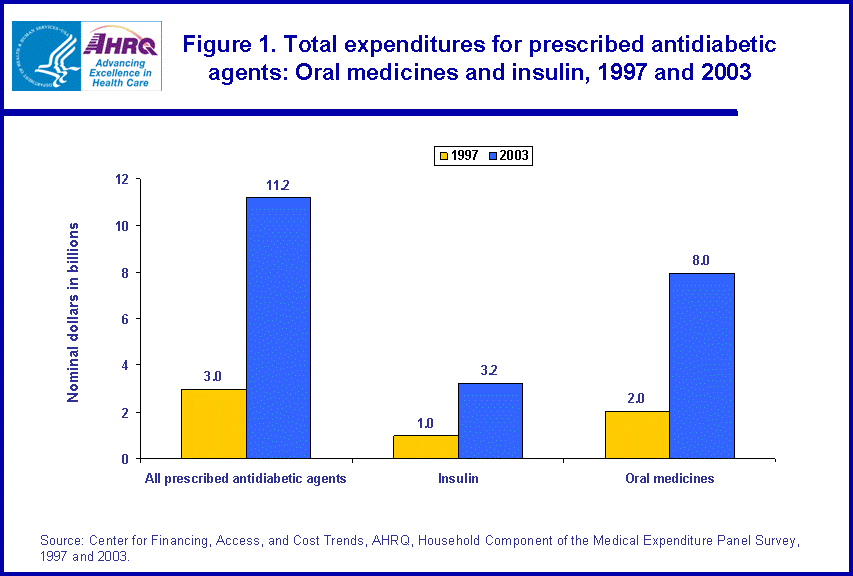 |
||||||||||||||||||||
|
||||||||||||||||||||
|
|
||||||||||||||||||||
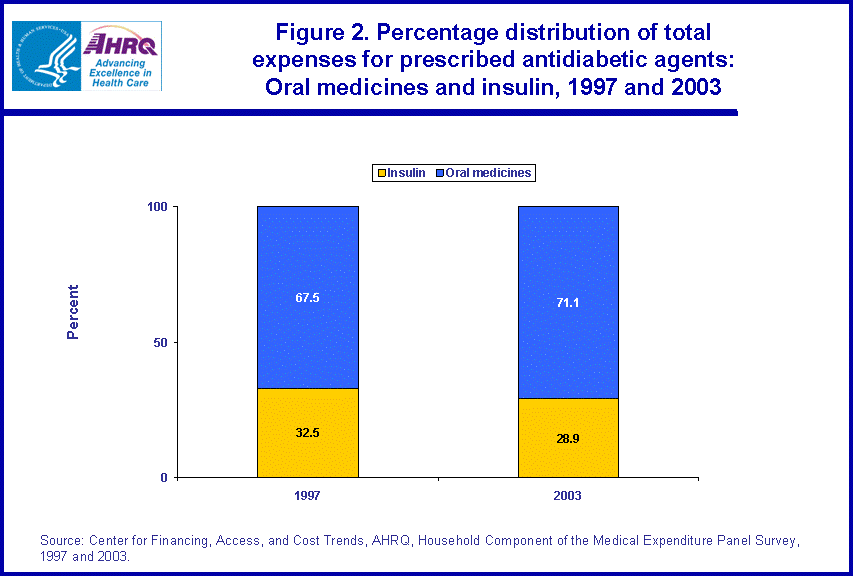 |
||||||||||||||||||||
|
||||||||||||||||||||
|
|
||||||||||||||||||||
 |
||||||||||||||||||||
|
||||||||||||||||||||
|
|
||||||||||||||||||||
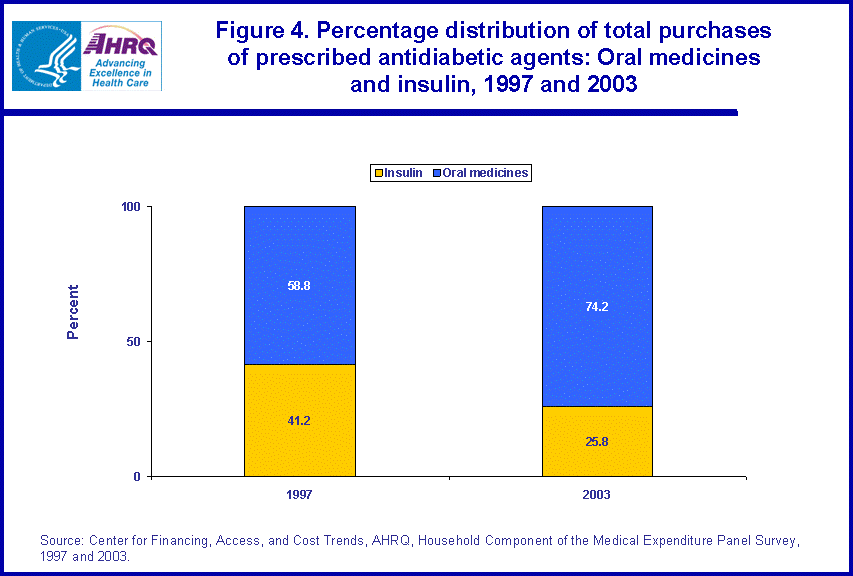 |
||||||||||||||||||||
|
||||||||||||||||||||
|
|
||||||||||||||||||||
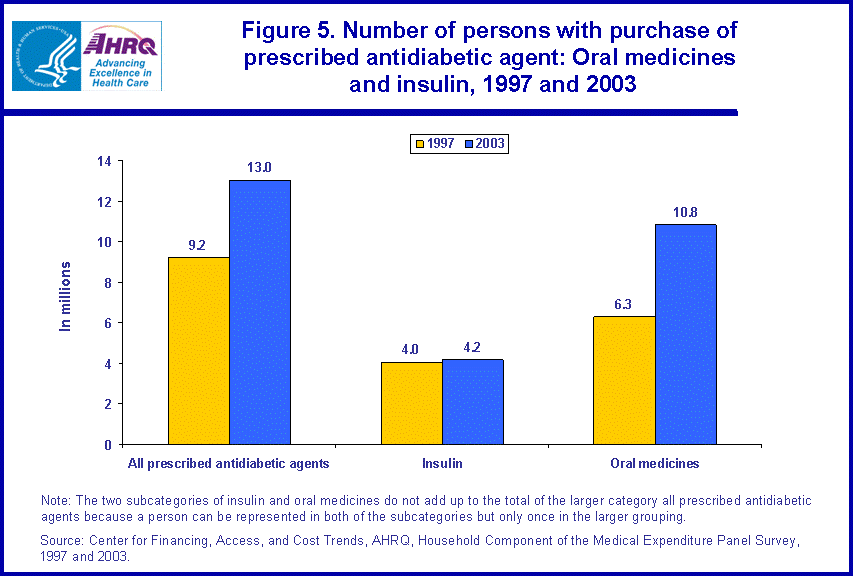 |
||||||||||||||||||||
|
||||||||||||||||||||
|
|
||||||||||||||||||||
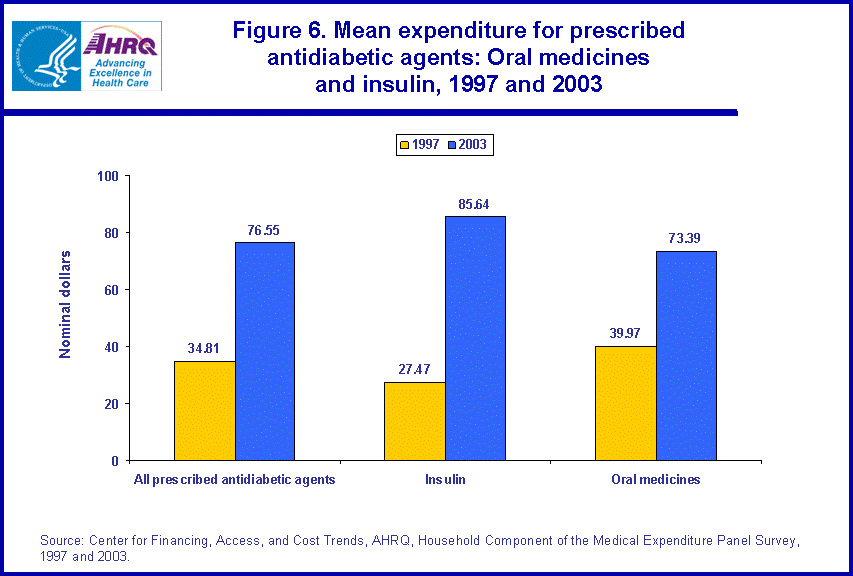 |
||||||||||||||||||||
|
||||||||||||||||||||
|
|
||||||||||||||||||||


